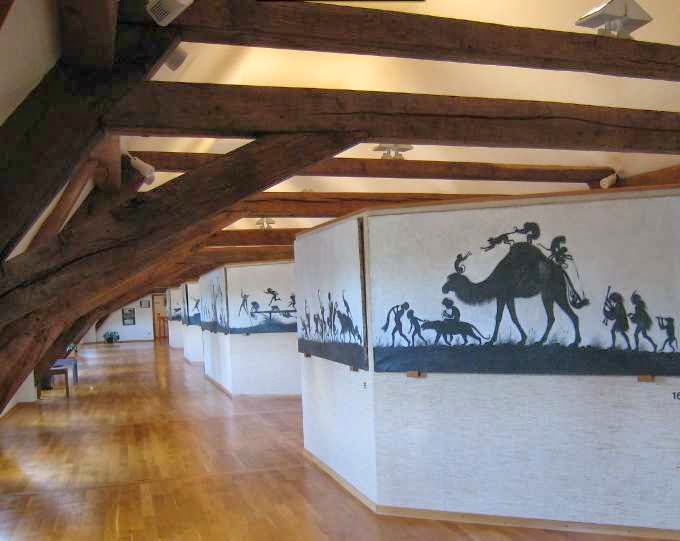A regular correspondent about items on Front Free Endpaper, Paul, recently delighted me by pointing out that the design used on the front cover and title page of A Prisoner in Fairyland by Algernon Blackwood (1913), a book which appeared in one of last years supernatural fiction catalogues from Callum James Books, was redrawn by Ralph Chubb for use on the title page of his 1937 book of poems The Water Cherubs. Chubb's drawing is almost exactly the same as the original but for the fact the figures have an overwhelmingly male aspect in his version whereas in Fairyland they seem a more mixed group.
It was a charming idea to imagine that Chubb had a copy of Fairyland on his shelves and was so enchanted by the image he saw there that he decided to recreate it at the front of one of his own books. It should be said that we shouldn't rule this out. Once you start to think about it there is a certain 'makes sense' feeling about the idea of Chubb reading Blackwood's novels. Both men shared a distinct nature-mysticism, in both cases it was based on intense experiences of revelation. Much of this was present in Blackwood's stories and novels and it's not a big ask to imagine Chubb reading and enjoying them.
...But, the image on the Fairyland book is credited to one F. W. Diefenbach, a curious fin-de-siecle German figure, a symbolist painter and social reformer who created what was probably the worlds first commune, advocated vegetarianism and free-love, and was an early naturist. James Conway has written about him numerous times on his brilliant Strange Flowers blog. The image is actually a very small part of a massive frieze in silhouette, known as "Per aspera ad astra", that Diefenbach created in the 1890s. It shows all manner of youthful figures in a vision of "youth, beauty and harmony" all frolicking towards a beautiful sun-filled future. The original can be seen in the town museum of Hadamar, Diefenbach's hometown, and where it stretches some 68 metres around the walls. If the artwork had been confined to display in a small German town it seems unlikely it would ever have come to the attention of Ralph Chubb or Algernon Blackwood and his publishers. In fact it was published in book form also, a concertina book which, even with the pictures reduced to a roughly 10" x 8" format would open out to a massive 27 feet. This book was certainly still available and probably in its first or second edition at the time of Fairyland's first publication in 1913.
In 1900 Diefenbach moved to Capri where he painted the outside of his house with figures from this massive earlier work, including a group of three figures clearly recognisable from the section we're concerned with. Again James Conway helps here having posted a photograph of the house on Strange Flowers.
Clearly both the Blackwood book and the Chubb use the same image by Diefenbach. We may never know exactly how Chubb stumbled on the image but however it happened it is a lovely thought that this small snippet of silhouette has made a connection between three men all with a mystical turn of mind, all lovers of nature and all with an unorthodox sexuality (Ralph Chubb dreamt of lissome youths, Blackwood may have been celibate but some have whispered about a little homosociality in his make-up, Diefenbach the advocate of free-love). The last image is from a vintage postcard taken from the frieze and, who knows, maybe it was one just like this that was Chubb's only contact with Diefenbach's work.





